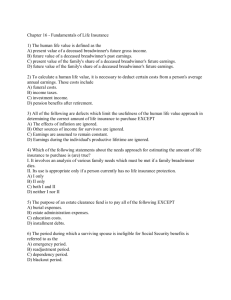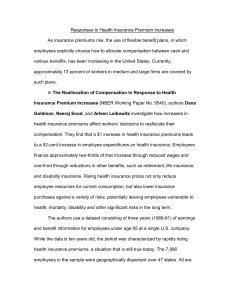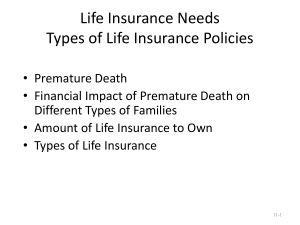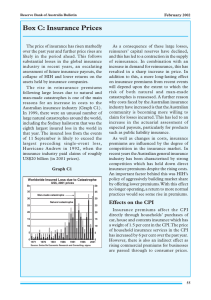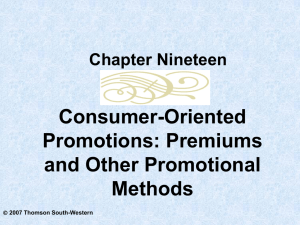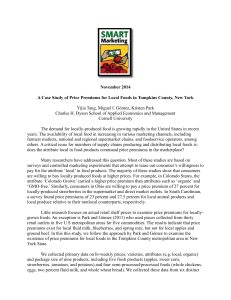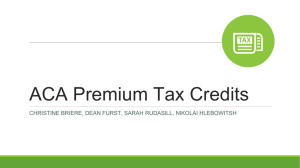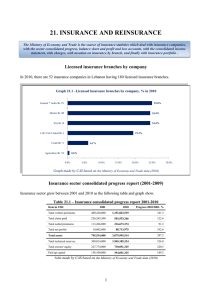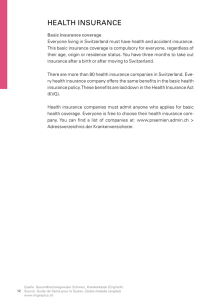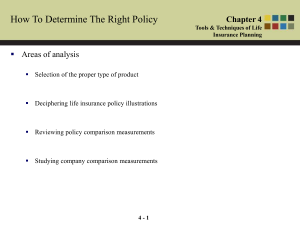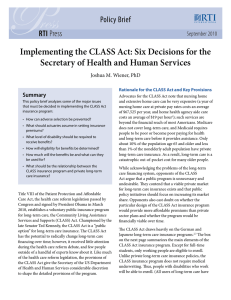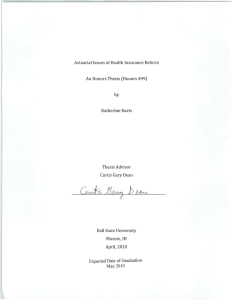Chapter 16 Fundamentals of life Insurance
advertisement
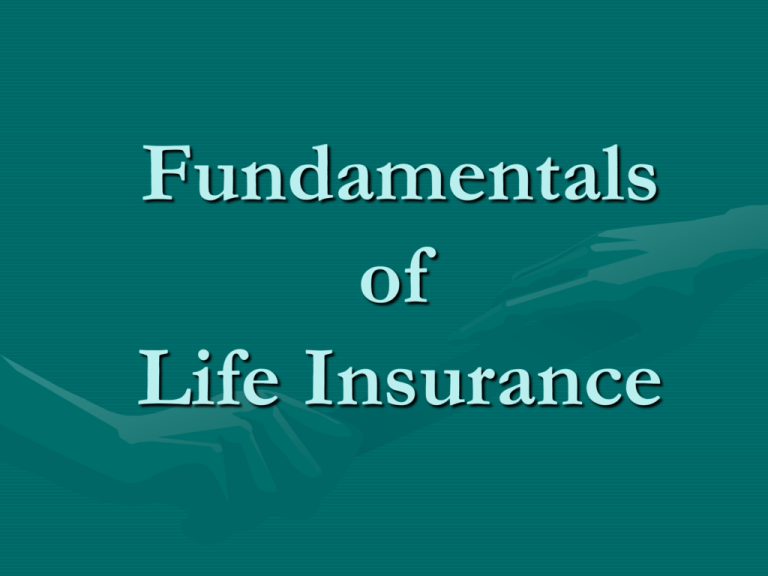
Fundamentals of Life Insurance The economic problem of premature death Premature death means that a person dies with outstanding unfulfilled financial obligations, such as children to support or a mortgage to be paid off. Several costs are associated with premature death. The family's share of the deceased breadwinner's income is lost forever; additional expenses are incurred because of funeral costs and other expenses; some families may experience a decline in their standard of living because of insufficient income; and there is the emotional grief and loss of a role model for the children. Life insurance is economically justified if: -someone earns an income, and -others are financially dependent on that income for at least part of their financial support. Three approaches that can be used to estimate the amount of life insurance to own The human life value is defined as: the present value of the family's share of the deceased breadwinner's earnings. This approach crudely measures the economic value of a human life. The human life value can be measured by the following steps: a. Estimate the individual's average annual earnings over his or her productive lifetime. b. Deduct federal and estate income taxes, Social Security taxes, life and health insurance premiums, and the costs of self-maintenance. c. Determine the number of years from the person's present age to the contemplated age of retirement. d. Using a reasonable discount rate, determine the present value of the family's share of earnings for the period determined in step c. The use of a lower discount rate in calculating the human life value will produce a higher human life value for the individual. The needs approach can be used to determine the amount of life insurance to own. After considering other sources of income and financial assets, the various family needs are converted into specific amounts of life insurance. The most important family needs are as follows: a. estate clearance fund b. income during readjustment period c. income during dependency period d. life income to the widow e. special needs - mortgage redemption fund - education fund - emergency fund f. retirement needs The advantages of the needs approach are as follows: a. It is a reasonably accurate method for determining the amount of life insurance to own after family needs are recognized. b. Other sources of income and financial assets are considered. c. Possible inadequacy of present life insurance is quickly recognized. d. The needs approach can also be used to recognize needs during a period of disability or retirement. The disadvantages of the needs approach are as follows: a. The family head is assumed to die immediately, which is unrealistic. b. Life insurance planning is required, which may be complex and difficult to understand. c. The family needs must be periodically evaluated to determine if they are still appropriate as family circumstances change. d. The needs approach ignores inflation in its simplest version. The capital retention approach is based on the assumption that the capital needed to provide income will not be liquidated. Three steps are involved. First, prepare a personal balance sheet that includes all death benefits from life insurance and other sources. Second, determine the amount of incomeproducing capital. Finally, determine the amount of additional capital (if any) that is needed. The two basic methods of paying premiums Under the yearly renewable term method, life insurance protection is provided for only one year. The policy can be renewed for successive one-year periods with no evidence of insurability. The yearly renewable term method is not suitable for lifetime protection because premiums increase with age until they reach prohibitively high levels. Under the level premium method, premiums are level and do not increase with age. The insured has lifetime protection to age 100. Under this method, premiums paid during the early years are higher than is necessary to pay current death claims, while those paid in the later years are inadequate for paying death claims. The redundant premiums paid during the early years are invested and used to supplement the inadequate premiums paid during the later years. The legal reserve The legal reserve reflects the redundant premiums paid during the early years of the policy. It steadily increases until it reaches the face of the policy by age 100. The fundamental purpose of the legal reserve is to provide lifetime protection. Because a legal reserve is necessary for lifetime protection, cash values become available. However, cash values are the by-product of the level premium method. Since the insured has paid in more than is actuarially necessary during the early years of the policy, he or she should receive something back if the policy is surrendered. One in Four U.S. Households Now Has No Life Insurance Relationship between the Net Amount at Risk and Legal Reserve


